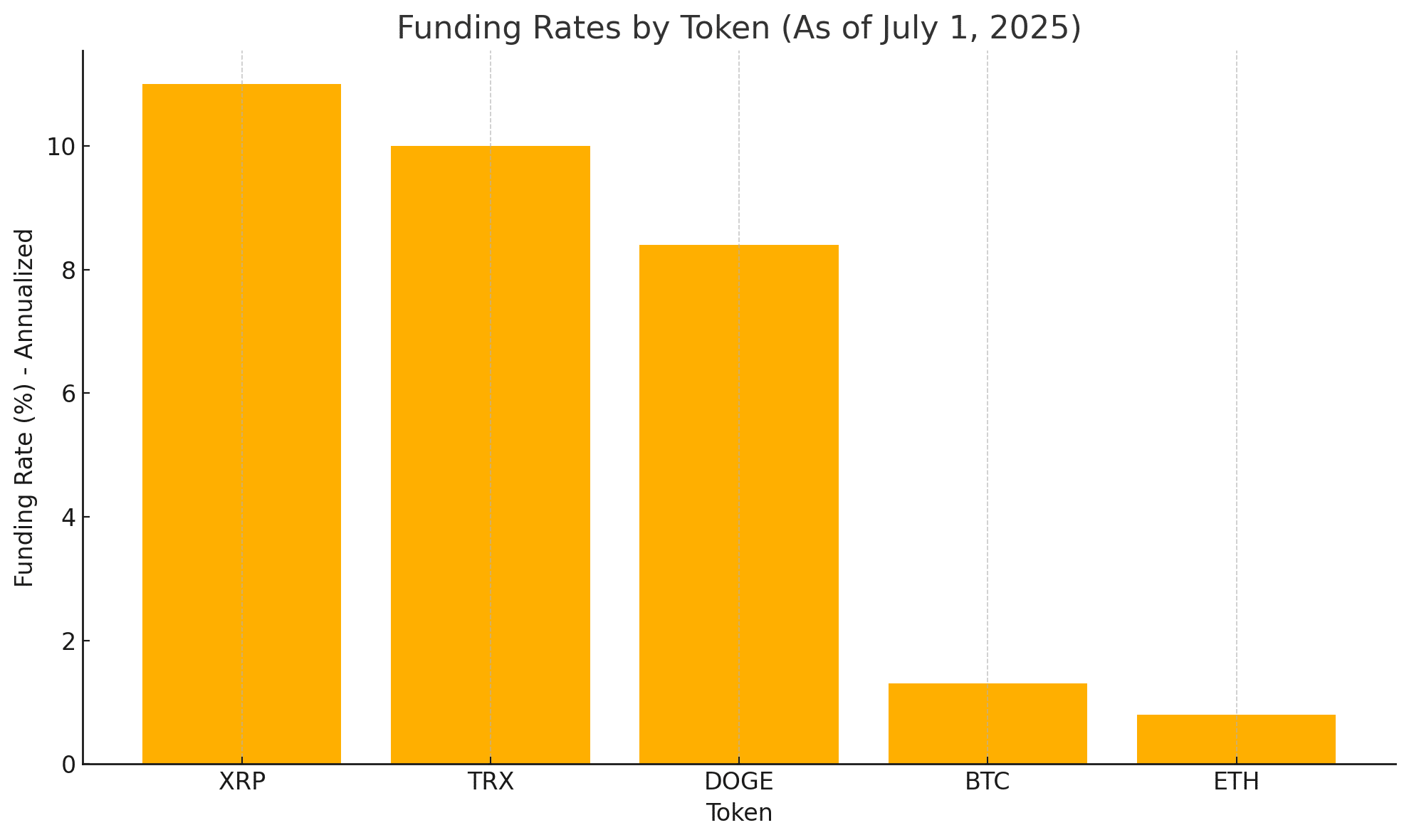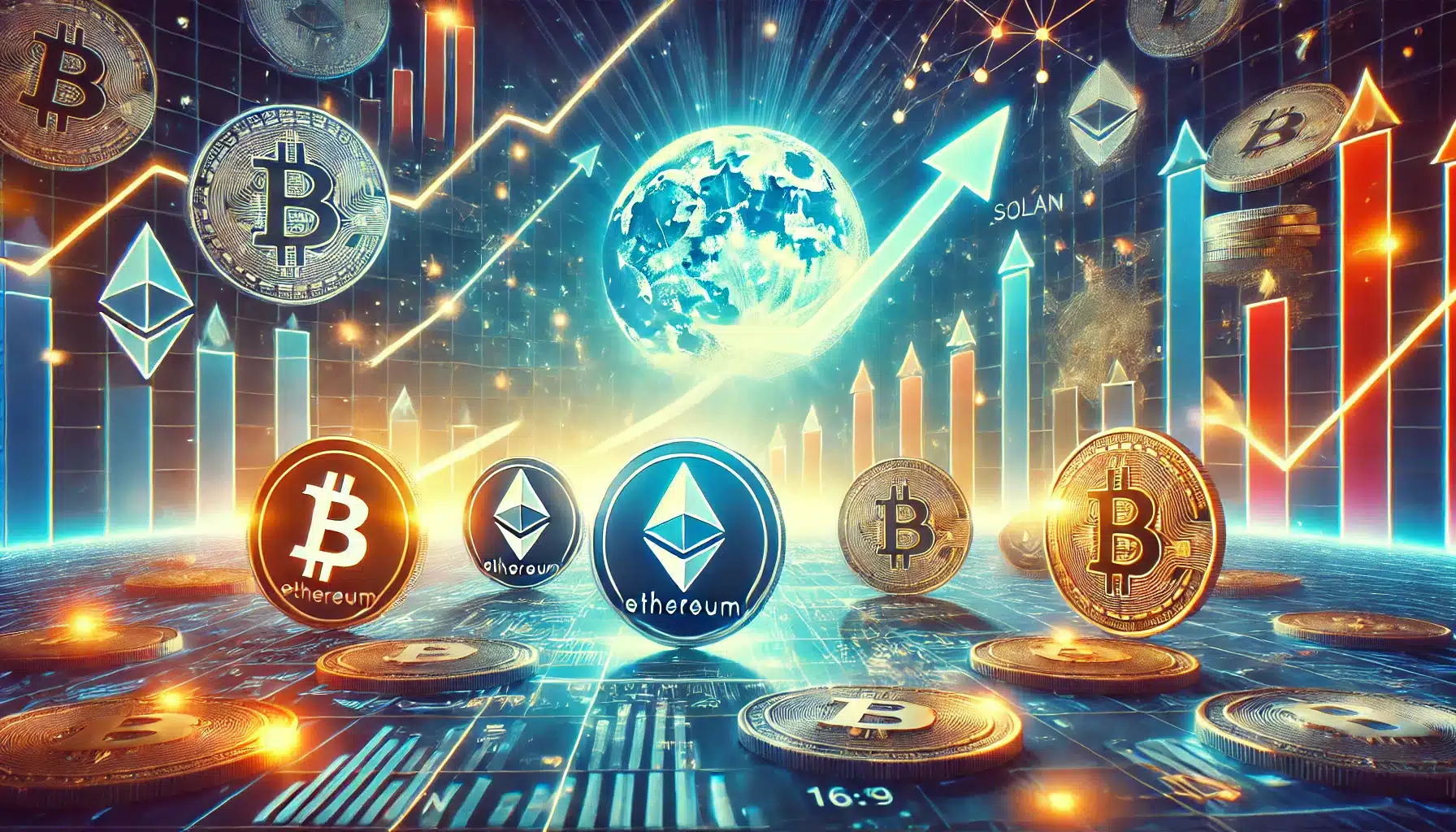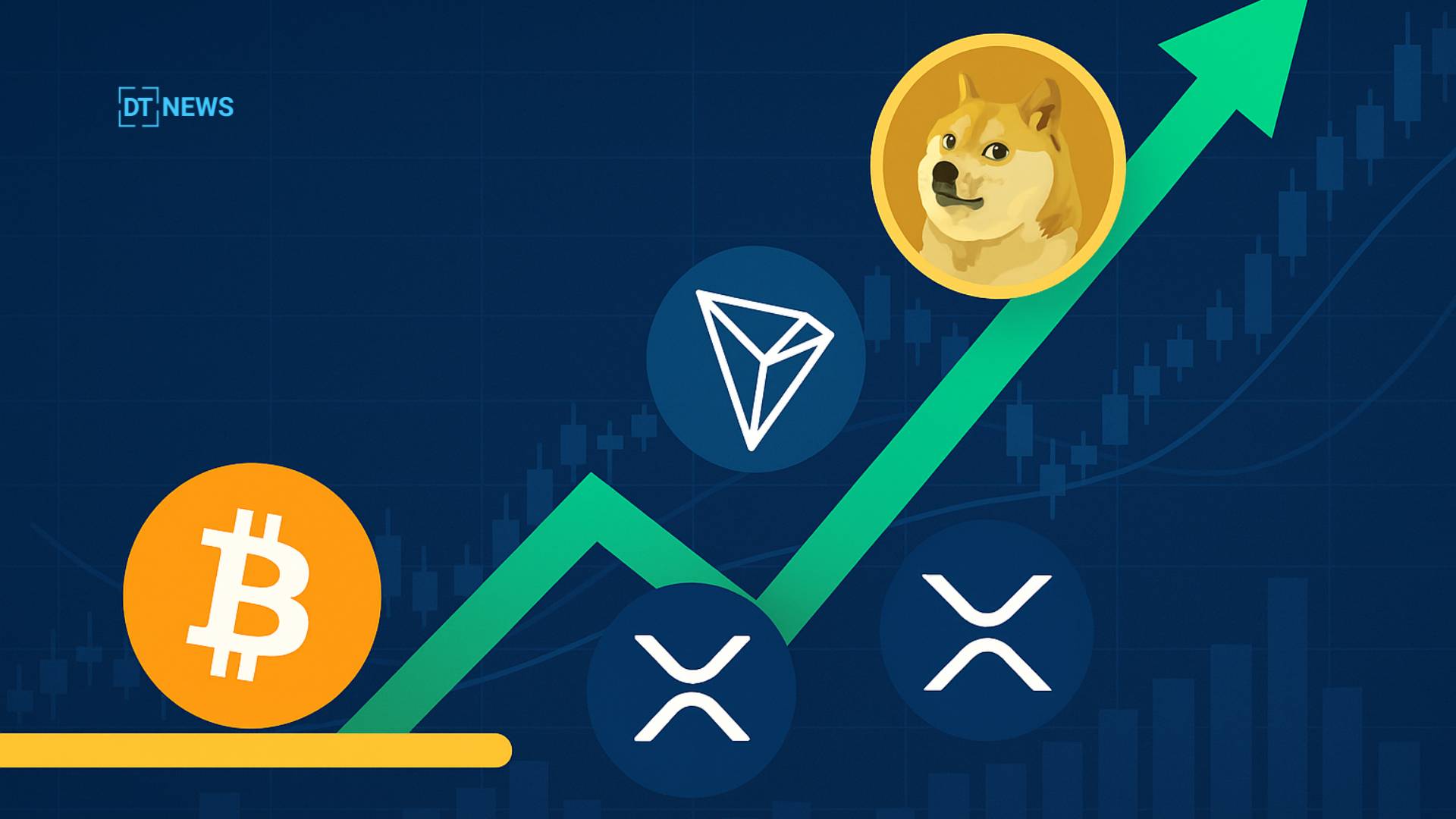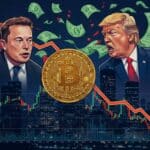The new quarter opened with a loud message from the derivatives pit: traders want exposure to altcoins, not Bitcoin. XRP, TRX and DOGE perpetual-futures contracts now command the three highest funding premiums in large-cap crypto, led by an 11 percent XRP funding rate that dwarfs Bitcoin’s barely positive 1 percent. Market desks interpret such spreads as an unmistakable tilt toward risk-on positioning just as Bitcoin enters its historically weakest stretch of the year.
- Why Funding Rates Matter
- Catalysts Behind the Numbers
- Bitcoin’s Q3 Puzzle
- Historical Context
- Risks to the Trade
- Near-Term Outlook
- An Overview of XRP Funding Rate and Other Altcoins
- FAQs
- Q1. What is the XRP funding rate?
- Q2. Why is the XRP funding rate important?
- Q3. What does a positive funding rate mean?
- Q4. Why are XRP, TRX, and DOGE funding rates rising?
- Q5. Can high funding rates lead to price increases?
- Q6. What are the risks of high funding rates?
- Glossary of Key Terms
Why Funding Rates Matter
Perpetual futures never expire, so exchanges impose eight-hour funding payments to keep contract prices tethered to the underlying spot market. A positive reading means longs pay shorts, revealing bullish crowding.
The current XRP funding rate has doubled in ten days, signifying a stampede into leveraged longs aimed at a breakout beyond the two-dollar mark. Comparable premiums, 10 percent on TRX and 8.4 percent on DOGE, signal that traders are chasing returns outside Bitcoin’s orbit.
Catalysts Behind the Numbers
Ripple vs. SEC Countdown
Traders point to mounting speculation that the long-running securities lawsuit could settle this summer. Each courtroom development has pushed the XRP funding rate higher, with algorithmic desks front-running the prospect of an eventual U.S. exchange-traded fund linked to the token.
Stablecoin Demand on Tron
TRON processes the lion’s share of offshore Tether transfers. Real-yield strategies that stake TRX collateral and recycle funding income explain why its premium sits just a hair below XRP. Should bond-yield expectations soften later this quarter, leverage on TRX could climb even closer to the leading XRP funding rate.
Meme-Fuel and Musk Mystique
Dogecoin’s funding rate leapt after a burst of social-media activity tied to the next Starship test flight. Options desks reported brisk buying of $0.20 calls expiring in mid-August, a pattern that typically precedes another leg up in meme-coin prices.

Bitcoin’s Q3 Puzzle
Since 2013 Bitcoin has posted an average Q3 gain of only 5.6 percent, by far its softest seasonal window. This year’s halving cycle complicates that statistical drag, yet the largest cryptocurrency still trades in a tight $105 k–$110 k band. The yawning gap between a near-zero Bitcoin premium and the double-digit XRP funding rate suggests capital is rotating down the market-cap ladder in search of higher beta.
Historical Context
Data from Coinglass show that whenever the XRP funding rate exceeds 8 percent for three consecutive sessions, the spot price has delivered a median 22 percent gain within four weeks, albeit with elevated volatility. TRX displays a similar, if softer, pattern: premiums above 9 percent have historically preceded double-digit rallies about 60 percent of the time.
Risks to the Trade
Leverage cuts both ways. A sudden macro shock—such as an upside payroll surprise that lifts Treasury yields, could drain risk appetite across crypto, sending funding premiums sharply lower. An overcrowded long book may then flip negative, triggering forced liquidations. Traders tracked the XRP funding rate closely during last year’s legal-filing delays; a single unfavorable docket item erased half the premium in two hours.

Near-Term Outlook
With three consecutive altcoins printing the richest funding spreads, derivatives desks talk openly about a micro-altseason even if Bitcoin flat-lines through July. Should Ripple settle with the SEC or simply secure a procedural win, the current 11 percent XRP funding rate could spike toward mid-teens territory, a level observed only twice in the past 18 months. TRX premiums may follow suit if on-chain USDT velocity continues to rise, while DOGE remains the wild card, forever hostage to meme momentum.
An Overview of XRP Funding Rate and Other Altcoins
The narrative driving crypto this summer is written in the funding-rate column rather than the spot-price chart. An elevated XRP funding rate, mentioned by every major analytics provider this week, stands as the market’s loudest bullish tell.
Until Bitcoin shakes off its seasonal lethargy, leverage will keep flocking to altcoins where regulatory headlines, stablecoin flows and social hype promise faster upside. For traders willing to stomach volatility, the playbook seems clear: follow the funding.
FAQs
Q1. What is the XRP funding rate?
It’s the fee paid by XRP perpetual futures traders to stay in long positions. A high rate shows strong bullish demand.
Q2. Why is the XRP funding rate important?
It signals market sentiment. A rising XRP funding rate indicates traders expect price gains.
Q3. What does a positive funding rate mean?
It means long traders are paying shorts, reflecting bullish positioning.
Q4. Why are XRP, TRX, and DOGE funding rates rising?
Traders are betting on altcoin gains due to catalysts like legal news (XRP), stablecoin activity (TRX), and social hype (DOGE).
Q5. Can high funding rates lead to price increases?
Not always, but they often precede upward moves when sustained.
Q6. What are the risks of high funding rates?
Overcrowded long positions can unwind fast, causing liquidations and sharp price drops.
Glossary of Key Terms
Funding Rate
A periodic fee is exchanged between long and short positions in perpetual futures to keep contract prices near spot levels.
Perpetual Futures
Crypto futures with no expiration date, maintained by funding payments.
XRP
The native token of the Ripple network, used for cross-border payments.
TRX (Tron)
The utility token of the TRON blockchain, heavily used for stablecoin transactions.
DOGE (Dogecoin)
A meme-based cryptocurrency often influenced by social media and celebrity activity.
Open Interest
The total number of active derivative contracts not yet settled.
Leverage
Borrowing capital to increase trade size; amplifies both gains and losses.
Altcoin
Any cryptocurrency other than Bitcoin.
Real Yield
Returns generated from actual revenue or utility, not from token inflation.



















































































































